
Understanding the Cost of Hospital Beds
Key Takeaways:
- Hospital bed prices at MedShopDirect range from approximately $1,800 to $9,500+ depending on features and capacity
- Basic electric models from brands like Costcare and Icare start at their listed prices on the website
- Key cost factors include height adjustment range, weight capacity, and positioning capabilities
- Many quality hospital beds may qualify for Medicare/insurance coverage with proper documentation
- Essential accessories like mattresses, rails, and overbed tables are additional investments
- Long-term value often justifies investing in higher-quality models with better warranty coverage
The cost of hospital beds varies significantly based on features, quality, and specialized functions. Understanding the actual pricing of different models available at MedShopDirect helps families and healthcare facilities make informed decisions that balance budget considerations with essential care requirements for optimal patient outcomes.
Hospital Bed Pricing
When evaluating the cost of hospital beds, it's important to recognize that price differences directly reflect functionality, durability, and therapeutic capabilities. Hospital beds represent a critical investment in patient care, with higher-quality models offering enhanced positioning options, superior construction, and longer warranties that often translate to better long-term value despite higher initial costs.
At MedShopDirect, we offer a carefully selected range of motorized medical beds across various price points to accommodate different budgets and care needs. Whether you're seeking affordable standard models or specialized low hospital beds for fall prevention, understanding what drives pricing helps ensure you get the best value for your investment.
Let's explore what influences the cost of hospital beds and examine pricing across different categories, brands, and specialized functions.
Understanding Hospital Bed Types and Their Costs
Hospital beds come in several categories, each with distinct price ranges based on their capabilities:
Hospital Bed Types Available at MedShopDirect
| Bed Type | Key Features | Best For |
|---|---|---|
| Semi-Electric Beds | Electric head/foot, manual height (like Costcare B120C) | Home care with occasional adjustments |
| Full Electric Beds | All-electric functions, remote control (like Costcare B135C) | Standard long-term care needs |
| Low Hospital Beds | Ultra-low height positions, fall prevention (like Medacure ULB models) | Fall-risk patients, memory care |
| Bariatric Hospital Beds | Reinforced frame, higher weight capacity (like Emerald Oasis models) | Larger patients requiring specialized support |
| Luxury Residential Beds | Premium finishes, quiet operation (like TransferMaster and Icare) | Home settings where aesthetics matter |
The cost of hospital beds directly reflects their capabilities, with specialized functions commanding higher prices that often deliver substantial value through improved outcomes and reduced complications.
Top Hospital Beds Across Different Price Points
After extensive evaluation of features, quality, and value, these hospital beds represent excellent options across various price categories:
Top Recommended Hospital Beds at MedShopDirect
 |
 |
 |
|---|---|---|
| Costcare Full Electric Hospital Bed B135C | Medacure Ultra Low Hospital Bed ULB3.9 | Emerald Oasis Infinity Bariatric Bed |
| • Full electric operation • Excellent value for standard care |
• Ultra-low height • Superior fall prevention |
• Expandable width • Enhanced weight capacity |
| See website for current pricing | See website for current pricing | See website for current pricing |
| See Product | See Product | See Product |
What Drives the Cost of Hospital Beds?
The cost of hospital beds is influenced by several key factors that directly impact functionality, durability, and therapeutic value:
1. Adjustment Mechanisms
The method of bed adjustment significantly affects price:
- Manual adjustments (lowest cost): Hand-crank systems require physical effort
- Semi-electric (mid-range): Electric head/foot with manual height adjustment
- Full electric (higher cost): Complete electric operation of all functions
- Programmable (premium): Memory position settings for consistent care
Each step up in adjustment technology adds approximately $300-$800 to the base cost of hospital beds.
2. Height Range Capabilities
Advanced height adjustment ranges command higher prices:
- Standard range (14"-22"): Basic transfer assistance
- Extended range (10"-26"): Better caregiver ergonomics
- Ultra-low range (7"-30"): Maximum fall prevention capability
Premium ultra-low beds like the Costcare B437 (7" minimum height) or Medacure ULB3.9 (3.9" minimum height) command higher prices but deliver exceptional value for fall-risk patients.
3. Weight Capacity Engineering
Structural reinforcement for higher weight capacities increases costs:
- Standard capacity (450-500 lbs): Suitable for most patients
- Heavy duty (500-600 lbs): Enhanced durability for longer service life
- Bariatric (600-1,000 lbs): Specialized reinforcement for larger patients
Bariatric hospital beds like the Emerald Oasis Infinity Max typically cost 50-100% more than standard models but provide essential support for larger patients.
4. Positioning Capabilities
Advanced positioning options increase therapeutic functionality and price:
- Basic positioning (head/foot elevation): Standard care requirements
- Trendelenburg positions: Critical for respiratory/circulatory management
- Cardiac chair: Specialized comfort for cardiac patients
- Programmable positions: Saved settings for consistent care
Models with full Trendelenburg positioning like the Medacure LX-BARI-CLS typically command $1,000+ premium over basic positioning models.
5. Frame Construction Quality
Superior materials and construction techniques affect both price and longevity:
- Steel gauge: Heavier gauge materials increase durability and cost
- Weld quality: Continuous welds outperform spot welds for longevity
- Finish type: Medical-grade finishes improve infection control
- Component quality: Hospital-grade motors and electronics reduce failures
Premium models from TransferMaster and Medacure feature higher-quality components that typically add 30-50% to base costs but can double service life.
Additional Recommended Hospital Beds at Various Price Points
These hospital beds offer exceptional value at their respective price points for specific care needs:

Icare Electric Hospital Bed IC111
The Icare IC111 represents the blend of medical functionality with residential aesthetics available at MedShopDirect. This model features elegant wood-grain finishes and quieter operation while providing necessary positioning functions for home healthcare environments.
Key Specifications
- Features: As listed on the product page
- Dimensions: See product specifications on website
Standout Features
- Designer Onyx finish that complements home décor
- Articulating frame for positioning
- Compatible with Icare accessories
- Quality casters with locking system
Perfect For
- Home care where aesthetics and function must balance
- Standard care needs with residential appearance
- Environments where institutional appearance causes concern
See website for current pricing

TransferMaster Supernal 5 Hospital Bed
The TransferMaster Supernal 5 available at MedShopDirect represents a premium residential hospital bed option, offering sophisticated engineering, comfort, and durability designed for discerning home healthcare environments. This model incorporates positioning technology with quiet operation and elegant design elements.
Key Specifications
- Features: As detailed on the product page
- Dimensions: See product specifications on website
Standout Features
- Programmable positions for care consistency
- Quiet motor system for undisturbed sleep
- Premium upholstery and finish options
- Hospital-grade components with residential appearance
- Warranty coverage as specified on product page
Perfect For
- Long-term care where quality and aesthetics matter
- Users seeking comfort and positioning options
- Luxury hospital bed for home environments
- Situations where investment in durability is prioritized
See website for current pricing

Medacure LX-BARI-CLS Trendelenburg Hospital Bed
The Medacure LX-BARI-CLS available at MedShopDirect brings hospital-grade features and durability to residential settings. This hospital bed incorporates Trendelenburg positioning capability, quality components, and a floor lock system as detailed on the product page.
Key Specifications
- Features: As specified on the product page
- Dimensions: See website for exact specifications
Standout Features
- Trendelenburg and Reverse Trendelenburg positioning
- Locking system with directional capability
- Motor system as described on product page
- Quality construction for durability
- Floor lock system for stability
Perfect For
- Patients with conditions requiring specialized positioning
- Professional home care with clinical functionality needs
- Situations where therapeutic positioning is essential
- Care environments seeking quality medical equipment
See website for current pricing
Cost Analysis: Hospital Bed Features Worth the Investment
When evaluating the cost of hospital beds, certain premium features deliver exceptional value despite higher initial prices:
1. Electric Height Adjustment
Though adding $500-$800 to base costs, electric height adjustment delivers significant benefits:
- Reduced caregiver injuries: Minimizes back strain during care tasks
- Safer transfers: Adjusts precisely to optimal transfer height
- Better care access: Improves positioning for procedures and examinations
- Enhanced independence: Allows patient control of transfer height
For long-term care situations, this feature typically pays for itself through injury prevention alone.
2. Ultra-Low Height Capability
Premium models with ultra-low positions (7" or less) typically add $700-$1,200 but provide:
- Reduced fall injury severity: Minimizes impact force in fall situations
- Enhanced patient confidence: Improves comfort with bed closer to floor
- Lower restraint requirements: Often reduces or eliminates physical restraint needs
- Better sleep quality: Reduces fall anxiety for improved rest
For fall-risk patients, this feature delivers exceptional value despite higher costs.
3. Weight Capacity Considerations
Higher weight capacities add cost but deliver critical benefits:
- Extended service life: Stronger frames resist wear and deformation
- Future adaptability: Accommodates potential weight changes
- Enhanced stability: Provides more robust performance
- Reduced mechanical failures: Heavier-duty components resist breakdown
Investing in capacity beyond immediate needs typically extends bed lifespan significantly.
4. Premium Mattress Compatibility
Higher-quality frames ($300-$500 premium) support advanced hospital bed mattresses for:
- Pressure injury prevention: Compatible with therapeutic surfaces
- Weight distribution: Better support for specialized mattress systems
- Therapeutic alignment: Maintains proper mattress positioning
- System integration: Works with monitoring and treatment systems
This compatibility often delivers substantial value through complication prevention.
Additional Costs: Essential Accessories
Beyond the base cost of hospital beds, these accessories represent important additional investments:
Essential Hospital Bed Accessories and Their Costs
| Accessory Type | Price Range | Purpose | Value Consideration |
|---|---|---|---|
| Hospital Bed Mattress | $300-$2,000 | Pressure management, comfort | Critical for pressure injury prevention |
| Side Rails | $150-$600/pair | Fall prevention, positioning aid | Essential safety component |
| Overbed Tables | $150-$500 | Activity surface, meal support | Enhances independence and comfort |
| Patient Lifts | $500-$3,000 | Transfer assistance | Prevents caregiver injury |
| Bed Trapeze | $150-$400 | Mobility assistance | Improves patient independence |
| Bed Exit Alarms | $100-$500 | Fall prevention monitoring | Reduces fall risk without restraints |
Quality accessories enhance functionality and can significantly improve quality of life beyond what the bed alone provides.
50-70% compared to economy models.
Insurance Coverage for Hospital Beds
Most quality hospital beds qualify for insurance coverage, offsetting the initial investment:
Medicare Coverage Requirements
Medicare Part B typically covers approximately 80% of approved hospital bed costs when:
- The patient's condition requires positioning that's not possible with a regular bed
- The patient requires head elevation above 30 degrees for medical reasons
- The patient requires specialized equipment only attachable to a hospital bed
- A physician provides documentation of medical necessity
Private Insurance Considerations
Private insurance coverage varies by plan but generally requires:
- Prior authorization (usually requiring clinical documentation)
- In-network provider selection
- Deductible satisfaction
- Possible co-insurance payment (typically 20-30%)
Financing Options for Remaining Costs
For patients with partial coverage or no insurance, we offer:
- Payment plans with 0% financing for qualified buyers
- Rental options with purchase credits for temporary needs
- Direct purchase with healthcare credit cards
- HSA/FSA payment options
Hospital Bed Pricing Comparison
When comparing costs across hospital bed types and brands, consider these price variations:
Hospital Bed Models Available at MedShopDirect
| Brand & Model | Type | Key Features | Category |
|---|---|---|---|
| Costcare B120C | Semi-Electric | Features as listed on product page | Standard |
| Costcare B135C | Full Electric | Full electric operation | Standard |
| Icare IC111 | Full Electric Residential | Designer finish, details on website | Residential |
| Medacure ULB3.9 | Ultra-Low | Low height capability, fall prevention | Specialized |
| TransferMaster Supernal 5 | Luxury Residential | Features as listed on product page | Premium |
| Emerald Oasis Infinity | Bariatric Expandable | Expandable design, see website for details | Bariatric |
| Medacure LX-BARI-CLS | Clinical Trendelenburg | Trendelenburg capability, see product page | Clinical |
Safety Considerations Related to Pricing
The cost of hospital beds often reflects safety features that provide substantial value:
Fall Prevention Technology
Higher-priced models incorporate advanced fall protection:
- Adjustable height: Ultra-low positions reduce fall injury severity
- Bed exit alarms: Integrated monitoring systems alert caregivers
- Rail systems: Various configurations for different risk levels
- Floor sensor integration: Works with external monitoring systems
These features typically add $500-$1,500 to base costs but can prevent costly injuries.
Entrapment Prevention
Quality hospital beds include design elements to prevent dangerous entrapment:
- Compliant rail spacing: Meets FDA entrapment guidelines
- Proper mattress integration: Designed for specific mattress dimensions
- Transition zone protection: Eliminates dangerous gaps between components
- Side rail design: Improved coverage with safer operation
These critical safety features are standard in quality models but may be absent in economy beds.
Conclusion and Cost-Based Recommendations
When evaluating the cost of hospital beds, focus on matching specific features to individual care needs, considering both initial price and long-term value. Based on our comprehensive analysis, we recommend:
- Budget range ($1,200-$1,800): Costcare B135C offers excellent basic functionality
- Mid-range ($1,800-$2,500): Icare IC111 balances aesthetics with clinical features
- Premium standard care ($2,500-$3,500): Medacure ULB3.9 provides exceptional fall prevention
- Premium residential ($3,500-$4,000): TransferMaster Supernal 5 delivers luxury and durability
- Specialized needs ($4,000+): Medacure LX-BARI-CLS offers hospital-grade clinical features
Each price point offers distinct advantages, with higher investments typically delivering enhanced features, greater durability, and better long-term value. Remember that the right hospital bed improves both patient outcomes and caregiver experience, making quality an investment that delivers returns through better care, reduced complications, and extended service life.
For personalized guidance on balancing the cost of hospital beds with your specific care requirements, contact our healthcare equipment specialists who can provide detailed recommendations based on your clinical needs, space considerations, and budget constraints.
For additional resources, check out our articles on Top Brands for Hospital Beds, Best Beds for Elderly and Senior Care, and How to Clean a Hospital Bed to ensure you make the right investment for your specific situation.


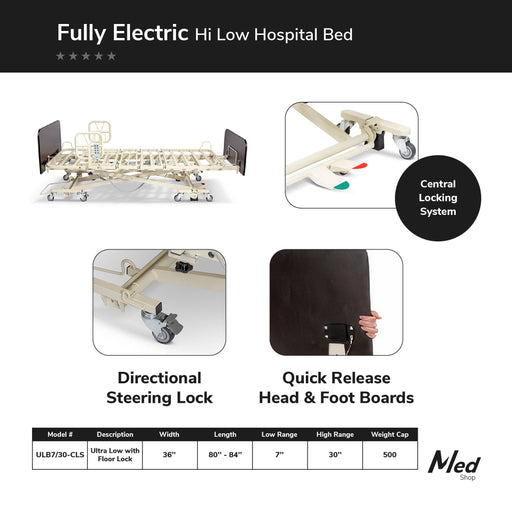
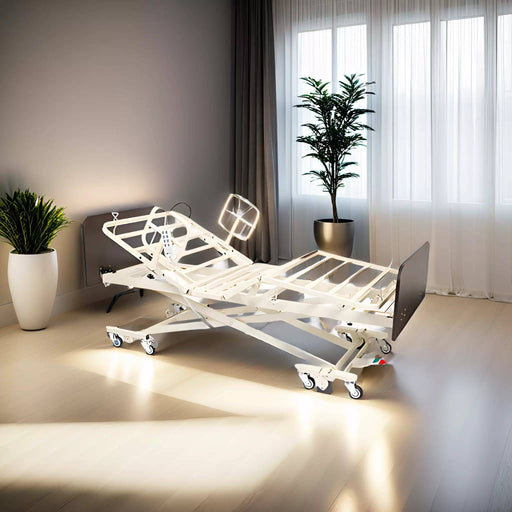
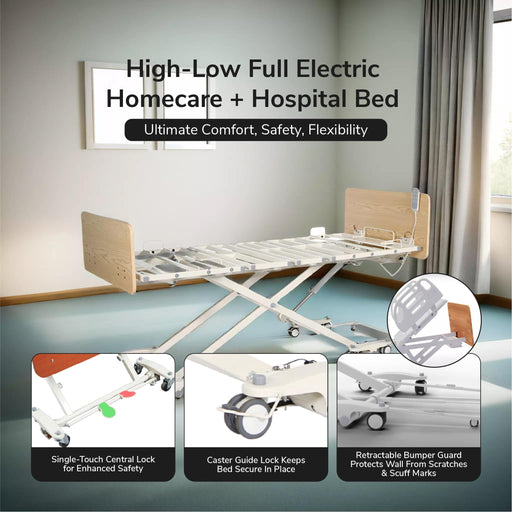
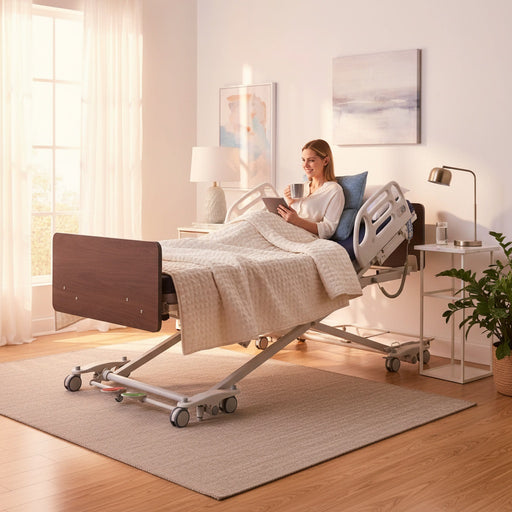


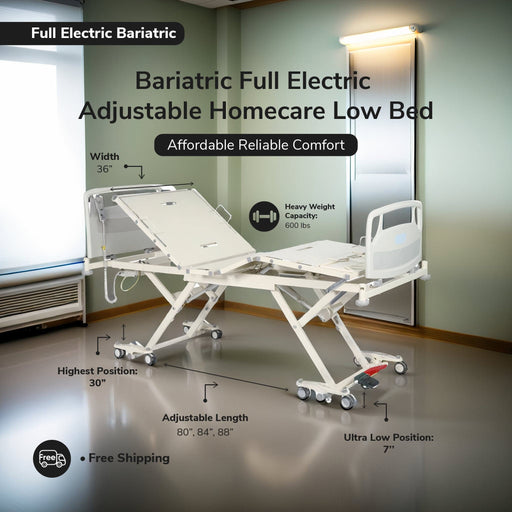
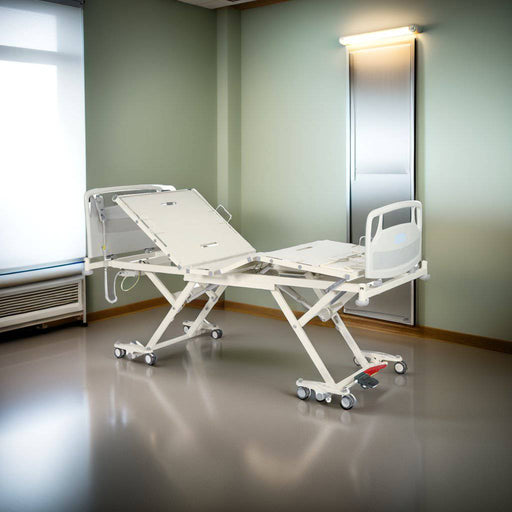
Leave a comment